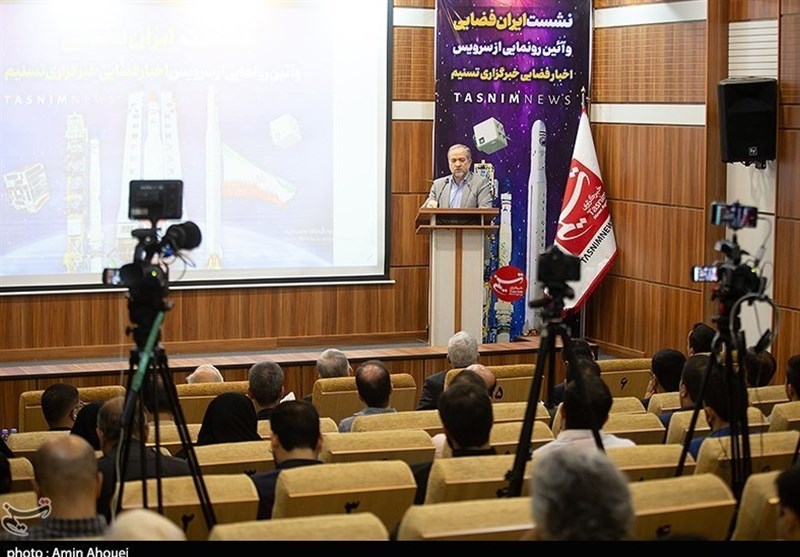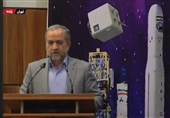Iran Initiates Sareer Satellite Launcher Construction for 36,000 km Orbit
TEHRAN (Tasnim) – Iran has initiated the construction of its Sareer satellite launcher, which is capable of reaching a 36,000-kilometer orbit, according to Ahmad Hosseini Mounes, the spokesman for the Defense Ministry's Space Division.
Hosseini Mounes highlighted Iran's progress in space technology during a television program commemorating Defense Industry Week.
He emphasized that the country's aerospace industry has thrived through the Islamic Revolution, driven by domestic capabilities and the efforts of anonymous scientists.
Hosseini Mounes underscored the significance of aerospace, noting that beyond an altitude of 80 to 100 kilometers above the Earth, the atmosphere dissipates, and at 200 kilometers, space orbits begin. Objects propelled at speeds of 7.5 kilometers per second at this altitude can enter orbit and serve various purposes as satellites or spacecraft.
He emphasized the integration of space technology into human life, citing applications in agriculture, disaster management, meteorology, security, commerce, and science. He highlighted advancements in communication, space-based technologies, and the development of radio, television, internet, and broadband communication systems.
Hosseini Mounes pointed out the crucial role of navigation satellites such as Global Navigation Satellite Systems (GNSS), which support diverse applications requiring access to space.
Regarding satellite capabilities, he stated that nearly 100 countries worldwide possess satellites, with 60 capable of constructing their own. Iran, he noted, joined the group of countries with satellite launch capabilities with the Safir satellite launcher in 2008.
Hosseini Mounes clarified that Iran's Ministry of Defense oversees the entire aerospace industry, including satellites, ground stations, and satellite launchers. Notable entities like the Iran Space Research Center are involved in satellite development. He also mentioned the Geographical Organization's role in the field.
He detailed the development of satellite launchers, with the Safir launcher successfully placing four satellites into orbit. Due to its limitations, Iran developed the Simorgh and Zoljanah satellite launchers for more versatile applications.
Hosseini Mounes discussed the revival of the Space High Council, led by President Raisi, which has approved a second ten-year plan for the space industry. He highlighted the Iranian Space Agency's role in overseeing major space programs and the active involvement of universities, private companies, and the academic network in satellite endeavors.
Additionally, he mentioned the Military Space Council's coordination with the Space High Council and the clear responsibilities of armed forces entities like the Space Industries Organization and the Space Force of the Islamic Revolution Guards Corps.
Hosseini Mounes concluded by providing insights into the Sareer satellite launcher, noting that the decision for its development has been officially sanctioned and aligned with the Iranian Space Agency. He expressed optimism that the inaugural launches of this satellite launcher would commence within the next 2 to 3 years, with the initial design phases already accomplished and research prototypes actively in construction.
"No other satellite launcher besides Sareer possesses the capability to reach a 36,000-kilometer orbit. This launcher primarily serves communication and television satellites, slated for launch via our domestically developed satellite launcher. Measuring satellites weighing between 200 to 250 kilograms, designated for high orbits, necessitate the use of the Sareer satellite launcher," Hosseini Mounes stated.
The spokesman also touched upon the development of orbital transfer blocks, emphasizing the unique complexities of the aerospace field, mentioning work on orbital transfer blocks and new satellites after the completion of satellite launcher missions.






